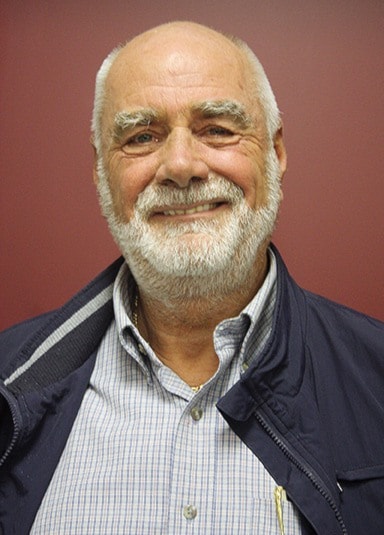Klaus Kuhn Guest Columnist
Who should pay for weir upgrades?
Should the CVRD, and by extension the local area taxpayers, take on that ongoing responsibility and financial burden?
Catalyst owns the weir and the necessary water storage licence. They use the vast majority of all surface water used in our Valley.
The provincial government has ultimate responsibility for the water flow and the fish in the river, except for the salmon, which are under the federal government’s jurisdiction. So the responsibilities and authorities are pretty clear. The CVRD has no involvement at this time.
It is felt by some people that, because the senior governments have not taken their responsibilities seriously, the CVRD has no option but to step into the void and take charge. But does the CVRD really have no other option?
There is much discussion about recent “downloading by the senior governments”. Is it really downloading, if a senior government neglects some of their responsibilities? Where is it written that local government has to step in and take charge?
Do the local taxpayers expect the CVRD to deal with every pressing issue that arises, even if it is clear it has no authority or responsibility to do so?
Local politicians are the ones most connected with their electors. They face criticism almost daily. It is no wonder therefore that they have a tendency to please the public, which means they have a hard time saying NO. They want to be the good guys. Needless to say, that often results in higher property taxes. It also means that the tax burden gets shifted from a senior government, which has multiple sources of revenue to a local government, whose only major income source is property taxes.
Also, senior governments’ revenues fluctuate with the economy. In times of an economic recession, there are cutbacks in spending. Local governments don’t have the kind of financial constraints that a slumping economy might provide. That, coupled with the reluctance to say NO to increasing demands, is a recipe for ever increasing property taxes.
Property taxes are considered regressive, in that the local taxpayers have no option to avoid paying, unlike other taxation, like consumption tax, alcohol tax and gas tax, where there is an option to adjust the behaviour or consume less.
If the senior governments neglect their responsibility with regard to the river, the salmon and the other fish, does the CVRD have to step in? If the Catalyst Mill has to close down for lack of water, does it become the CVRD’s responsibility?
Where is the incentive for the senior government or Catalyst to live up to their responsibilities, if the CVRD presents itself as the fall back option?
Bylaw 3930 was passed at a recent board meeting. It enables the CVRD, among other things, “to build, upgrade, inspect, operate and/or own a weir on Cowichan Lake.” Under this bylaw the CVRD can also obtain and hold water licences. This may trigger an annual tax requisition of up to $ 600,000. That’s $9.13 per $100,000 of taxable property value.
Bylaw 3930 is subject to Alternative Approval Process that will end on Dec. 2, 2015.
The new water licence is being labeled a Conservation Licence. That is misleading. The additional water is actually needed by Catalyst to keep operating despite summer droughts. Last summer is a case in point. The existing water licence stipulates that a minimum flow of seven cubic meters per second has to be maintained to assist the fish and to dilute the sewer outfall. In the last several years that flow has been reduced to five and 4.5 cms in order to stretch the supply of water through the dry summer months and to avoid a closure of the mill. This was arranged through a request to the provincial government. If the flow had been kept at seven centimetres through the summer, the Catalyst Mill would most likely have had to cease operations because the lake level would have been at zero storage.
If the description of Conservation Licence is to be insisted upon, then what are we conserving? If we are conserving water for the fish, then we are doing something that is the responsibility of the provincial government. We have no jurisdiction when it comes to fish or the flow of the river.
The weir was built in the 50s and that was when the rule curve, which dictates how much water can be released from the weir, was established. The climate has changed dramatically since the 50s. A new weir with a new rule curve (or rule band) are desperately needed. Of that there is no question.
The question is, “Should the CVRD get involved with the ownership, operation or financing of the weir?”
Are you concerned about the CVRD taking on ever increasing responsibilities?
Are you concerned about increasing property taxes?
You should be, after all it is your money.
Klaus Kuhn is the Cowichan Valley Regional District director for Area I (Youbou/Meade Creek).
